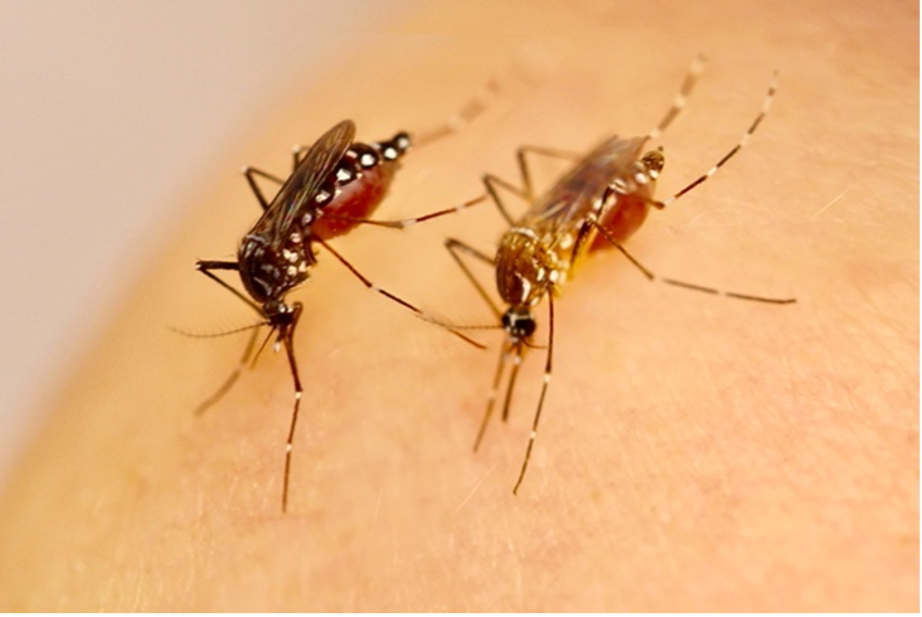 Microbiology
Microbiology
Aedes aegypti: Rise of a super-vector
Just as Rome wasn’t built in a day, the mosquito Aedes aegypti did not become the world’s most efficient carrier of human viruses overnight. Our study uncovered the genetic evolution that contributed to turn an African forest-dwelling mosquito into a super-vector.

There are approximately 3,500 known mosquito species out there, but contrary to common belief, the ability to transmit viruses to humans is the privilege of only a few of them. Among this very private club, Aedes aegypti, also known as the yellow fever mosquito, is the first pathogen-transmitting mosquito causing human viral diseases. Although Aedes aegypti is now well recognized as the most efficient vector (carrier) of viruses and the major cause for their worldwide spread, this was not always the case.
Originally, the ancestral populations of Aedes aegypti took blood meals from various vertebrate hosts in sylvan habitats in Africa. Following a domestication process that presumably occurred 5,000-10,000 years ago, a human-adapted Aedes aegypti population with a marked preference for human blood and the inclination to breed in human habitats evolved from the generalist ancestors. This shift in its feeding and breeding behavior allowed the domesticated form of Aedes aegypti to escape from Africa 400-500 years ago during the rise of transatlantic trade and colonize the rest of the world over the last centuries.
Aedes aegypti is now present throughout the tropics and sub-tropics. It consists of two subspecies that are morphologically, ecologically, and genetically distinct: Aedes aegypti aegypti (Aaa) and Aedes aegypti formosus (Aaf) (Figure 1). The globally invasive subspecies Aaa thrives in urban habitats across the American and Asian tropics with females taking up to 95% of their blood meals from humans. In contrast, the contemporary African subspecies Aaf remains a generalist and is only found in sub-Saharan Africa.
The adaptation of Aedes aegypti to the domestic environment and the increased frequency of encountering humans for blood meals significantly enhanced its vector performance. But was it enough to turn this forest-dwelling mosquito into the fearsome virus-transmitting machine that we know today? How did Aedes aegypti’s intrinsic ability to acquire and transmit viruses evolve during this process?
To address these questions, we gathered wild populations of Aedes aegypti from different regions of the globe representing both Aaf and Aaa subspecies. Then, we evaluated their ability to become infected with Zika virus (ZIKV). ZIKV is a mosquito-borne virus that recently emerged across the Pacific and Latin America, causing millions of infections sometimes associated with birth defects and neurological complications. We observed that mosquito populations varied greatly in their ZIKV susceptibility depending on their geographical origin. Strikingly, Aaf populations were all significantly less likely to acquire ZIKV infection from an artificial infectious blood meal than Aaa populations. Additionally, we confirmed that Aaf mosquitoes had a substantially lower ability to become infected and transmit ZIKV from a live infected mouse than their Aaa counterparts.
Although most African populations of Aedes aegypti belong to the Aaf subspecies, natural hybrid populations display mixed Aaf and Aaa genetic ancestry in a few locations such as Senegal and Angola. We thus examined an extended panel of African Aedes aegypti populations with various levels of Aaa genetic ancestry to analyze the genetic basis of ZIKV susceptibility. We found that a higher proportion of Aaa genetic ancestry translated into a higher level of ZIKV susceptibility, which pointed to a genetic cause for the observed differences in ZIKV susceptibility. We next interbred ZIKV-susceptible Aaa and ZIKV-resistant Aaf in the laboratory to generate hybrid populations from Aaa and Aaf parents to investigate the underlying genetic basis further. Hybrid populations allowed us to delineate chromosomal regions of the mosquito genome underlying the differences in ZIKV susceptibility.
Altogether, our results showed that Aedes aegypti’s efficiency as a vector was not built in a day but resulted from a long evolutionary process. Moreover, our results indicated that this evolutionary process initiated thousands of years ago during its human specialization and subsequent range expansion outside Africa. Unfortunately for us, Aedes aegypti’s domestication did not only increase its appetite for human blood but also posed a marked increase in its intrinsic ability to acquire and transmit pathogenic viruses. In conclusion, our findings uncovered a key driver of ZIKV global emergence and provided a potential explanation for the lack of major ZIKV outbreaks in Africa.
Original Article:
Aubry, F. et al. Enhanced Zika virus susceptibility of globally invasive Aedes aegypti populations. Science 370, 991-996 (2020)Next read: How did wild cats turn into our beloved domestic animals? by Magdalena Krajcarz , Maciej Krajcarz
Edited by:
Isa Ozdemir , Senior Scientific Editor
We thought you might like
How humans gave acne to the grapevine
Feb 28, 2015 in Evolution & Behaviour | 3.5 min read by Carlos J. Rivera-RiveraThe lingering effects of parental care and its role in evolutionary change
Jan 27, 2016 in Evolution & Behaviour | 4 min read by Rebecca KilnerLiving without mitochondria: the downfall of one textbook truth
Oct 3, 2016 in Evolution & Behaviour | 3.5 min read by Lukáš NovákFancy footwork: Darwin’s pigeons and the evolution of foot feathers
Jan 20, 2017 in Evolution & Behaviour | 3.5 min read by Eric DomyanMore from Microbiology
Monoclonal antibodies that are effective against all COVID-19 -related viruses
Jan 31, 2024 in Microbiology | 3.5 min read by Wan Ni ChiaPlagued for millennia: The complex transmission and ecology of prehistoric Yersinia pestis
Jul 31, 2023 in Microbiology | 3 min read by Aida Andrades Valtueña , Gunnar U. Neumann , Alexander HerbigHow cellular transport can be explained with a flip book
Jun 5, 2023 in Microbiology | 3 min read by Christina ElsnerThe Achilles’ heel of superbugs that survive salty dry conditions
Apr 24, 2023 in Microbiology | 4 min read by Heng Keat TamNew chemistry in unusual bacteria displays drug-like activity
Mar 21, 2023 in Microbiology | 3.5 min read by Grace Dekoker , Joshua BlodgettEditor's picks
Trending now
Popular topics


